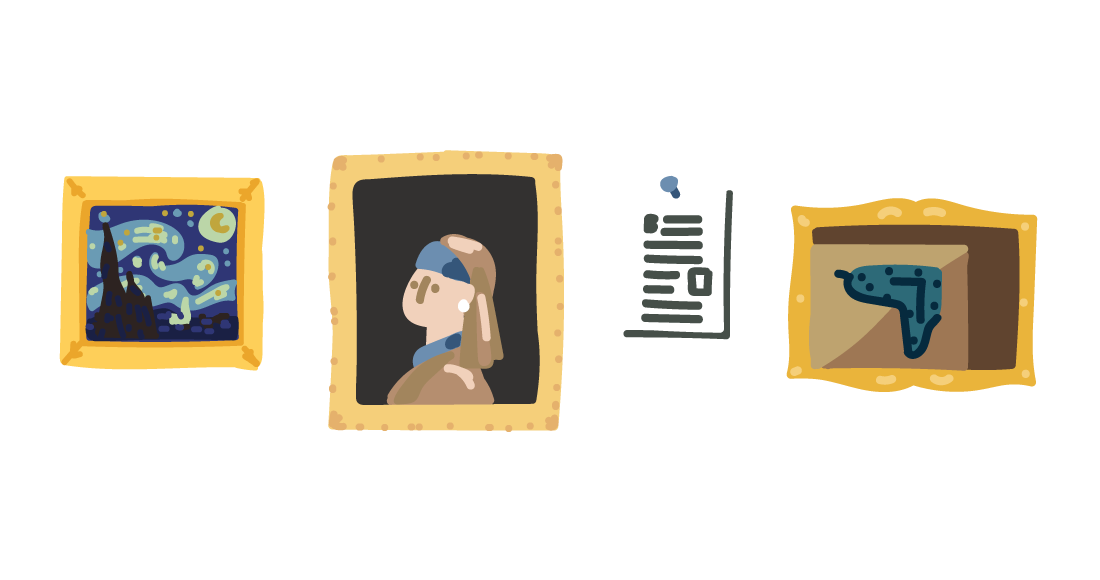If you are a UX or UI designer, graphic or a web designer and if you are trying to get more job offers, you know that you need to build an online portfolio, the so-called web résumé, which will contain some spectacular designs you are proud to present to the world.
When creating a portfolio website, you make sure to include your best work (followed by some stunning, jaw-dropping visuals) and a readable font. You write a compelling About me page, highlight testimonials and positive feedback you got from previous clients. You even include social media icons and links to your portfolios on Behance and Dribble. You go through all the steps one should take to create an eye-catching portfolio worthy of your recruiters’ time.
Once you do all these steps, you feel like everything’s set.
Guess what? You are not quite done. There’s one thing missing, and that is a blog section.
If you are rolling your eyes now reading through this text, thinking you are not a creative writer and there’s no need for you to write blog posts, allow us to change your mind.
We strongly believe that including a blog in an online portfolio can raise your chances of getting your next gig. And here’s why:
P.S. Be sure not to skip the very end of this article, to find out some tips on how to write blog posts recruiters will enjoy reading.
Reason #1: Blog allows you to show your communication skills
As you might know, when applying for a job, communication skills are of utmost importance. No matter if you are applying for a position of a creative team member or a freelance designer who is going to talk with the company’s manager only, you are going to encounter a lot of different personalities, handling both pleasant and unpleasant situations.
This is the reason why it is essential for you to show that your verbal communication is on point and that you don’t hesitate to discuss a work-related issue, in the search for a problem solution.
Since recruiters are checking your online portfolio, they won’t be able to find out how you behave in a working environment nor how you communicate. If you think about it, when they go through your previous projects, they will get a glimpse of your experience, skills, and expertise, but not your soft skills.
So, if you want to show your potential clients just how communicative you are, use blog posts for this purpose. Write posts that will show your soft skills
Reason #2: An updated blog shows your dedication
You have probably heard that the no. 1 rule of blogging is to determine your blog posting frequency. And that’s the truth.
When writing posts for your blog, you don’t have to pay as much attention to how long the articles are. What you should pay attention is how often you publish posts. No matter if you create one post every four days or a post every four weeks, the most important thing is to be consistent. By following the predefined schedule, you’ll show how dedicated and consistent you are.
Create an editorial calendar and get to writing.
Reason #3: Having a blog section helps you stand out
Can you do us a favor and check Awwwards’ best portfolio websites? You don’t have to go through all of them, just check the first five sites.
What did you notice about these sites? Smooth animations, big typography (which is in trend right now), a compelling website copy? These sites seem like they have it all!
What they don’t have is a blog section.
So, why don’t you use this information as your advantage? Be one of the rare designers that created an outstanding portfolio website and had the time and the will to create a blog section AND to write posts.
Reason #4: Having a blog allows you to show who you really are
Let’s be honest: Projects or Work page in your online portfolio is your chance to brag. And that’s O.K.
There are numerous high-skilled designers who have worked with major brands and created beautiful art pieces, and you need to stand out.
When including a project in your online portfolio, you can describe the work you’ve done in detail, mentioning the goals you reached and the techniques you used. Not only that, you can refer to a couple of big names you have partnered up with, followed by some astonishing visuals.
To allow you to brag as much as you want, we included the project info section in all our portfolio themes. We are especially proud of how the project info section turned out in Bottega.
However, recruiters need to see more than you showing off. They would love to see your perspective and struggle when you were working on a particular project. They would like to see the challenges you went through and how you handled them. Make their wishes come true and put all your challenges in blog posts. Show your personality, attitude, what motivates you and ignites your creative spark, etc. Show how organized, independent, reliable, and result-oriented you are.
Reason #5: Writing blog posts will show recruiters that you are ready for your next gig
In any profession, especially in design, you should never stop learning, sharing, and building your experience.
This is the reason why we would recommend you include in your blog posts all the courses, classes, conferences you attended in the past period and share your perspective. You can also write about the books you’ve read, and the lessons you’ve learned collaborating with previous clients.
By doing so, you will show that you care about your professional growth and that you are ready to invest all your skills into your potential clients’ projects.
Quick tips on how to write blog posts that will fit your online portfolio
By now, hopefully, you are a bit more convinced that you should include a blog in your online portfolio.
So, to help you get started with your blog and writing the posts, we came up with 10 quick tips:
1. Create several blog post categories, so recruiters can find what they are looking for faster.
2. When deciding on blog post topics, keep in mind the reason you chose to write blog posts. If you created a blog in the hope of getting more gigs, think about the type of content recruiters would be interested in reading and what blog posts would contribute to you being hired.
3. Every blog post needs to have an introduction, story development, and a conclusion.
4. Try to come up with a catchy headline. For example, if you are planning on writing a few paragraphs about your favorite book, you can write a headline like The Book That Changed My Perspective on X Things, rather than just naming the book and the author. You can always experiment with negative headlines (which contain the words like “never” or “stop”) or headlines that are in the form of a question.
5. When it comes to writing style, opt for a conversational one, your online portfolio visitors will enjoy reading. Leave out the acronyms and jargon terms aside.
6. Paragraphs shouldn’t be longer than four lines.
7. Be sure to bold the parts of the text you want to emphasize.
8. Link to your projects and brands you have partnered with.
9. If you are not much of a writer, you can always add a video or exciting visuals.
10. Once you feel like the post is done, check the flow of the text, grammar issues, and punctuation.
There’s only one question left…
… are you ready to include a blog in your online portfolio and start writing blog posts?
If you are, we wish you good luck! Let us know how writing your first blog post went.
Keep on rockin’!




4 thoughts on “ 5 reasons why you should include a blog in your online portfolio ”